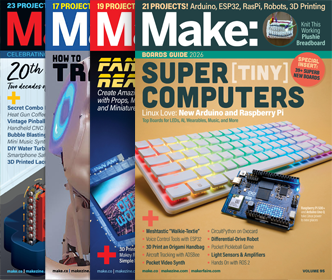
Dazzling Kaleidoscope
WHAT WILL YOU MAKE?
A cardboard tube from a roll of paper towels is the perfect size for your kaleidoscope. Inside the tube, you need three reflective surfaces—this can be made from a plastic document folder. However, if you can find it, mirrored paper also works well. When your kaleidoscope is finished, look through it and point it toward a lamp or out of the window. But remember to never point the tube directly at the sun, because you could damage your eyes.
WHAT WILL YOU LEARN?
You will learn to build a classic kaleidoscope
STEPS
STEP 1
STEP 2
STEP 3
STEP 4
STEP 5
STEP 6
STEP 7
WHAT'S HAPPENING HERE?
A kaleidoscope works by reflecting light. Light travels in a straight line. When light bumps into something it changes direction. If light bumps into something shiny it reflects back in the direction it came from.
Materials:
- Pencil
- Scissors
- Masking tape
- Colored beads
- Colored paper
- Cardboard tube
- Clear plastic folder
- Ruler
- Plastic wrap
- Wax paper
See More Projects in these topics:
Arts & CraftsSee More Projects from these themes:
Art/Craft StudioMaker Camp
Please Note
Your safety is your own responsibility, including proper use of equipment and safety gear, and determining whether you have adequate skill and experience. Power tools, electricity, and other resources used for these projects are dangerous, unless used properly and with adequate precautions, including safety gear and adult supervision. Some illustrative photos do not depict safety precautions or equipment, in order to show the project steps more clearly. Use of the instructions and suggestions found in Maker Camp is at your own risk. Make Community, LLC, disclaims all responsibility for any resulting damage, injury, or expense.
Maker Camp Project Standards
Based on NGSS (Next Generation Science Standards)
National Core Arts Standards
The National Core Arts Standards are a process that guides educators in providing a unified quality arts education for students in Pre-K through high school. These standards provide goals for Dance, Media Arts, Music, Theatre, and Visual Arts with cross-cutting anchors in Creating, Performing, Responding, and Connecting through art. The Anchor Standards include:- Generate and conceptualize artistic ideas and work.
- Organize and develop artistic ideas and work.
- Refine and complete artistic work.
- Select, analyze, and interpret artistic work for presentation.
- Develop and refine artistic techniques and work for presentation.
- Convey meaning through the presentation of artistic work.
- Perceive and analyze artistic work.
- Interpret intent and meaning in artistic work.
- Apply criteria to evaluate artistic work.
- Synthesize and relate knowledge and personal experiences to make art.
- Relate artistic ideas and works with societal, cultural, and historical context to deepen understanding.
NGSS 3-5.Engineering Design
The Next Generation Science Standards (NGSS) are K–12 science content standards.- 3-5-ETS1-1. Define a simple design problem reflecting a need or a want that includes specified criteria for success and constraints on materials, time, or cost.
- 3-5-ETS1-2. Generate and compare multiple possible solutions to a problem based on how well each is likely to meet the criteria and constraints of the problem.
- 3-5-ETS1-3. Plan and carry out fair tests in which variables are controlled and failure points are considered to identify aspects of a model or prototype that can be improved.
NGSS MS.Engineering Design
The Next Generation Science Standards (NGSS) are K–12 science content standards.- MS-ETS1-1. Define the criteria and constraints of a design problem with sufficient precision to ensure a successful solution, taking into account relevant scientific principles and potential impacts on people and the natural environment that may limit possible solutions.
- MS-ETS1-2. Evaluate competing design solutions using a systematic process to determine how well they meet the criteria and constraints of the problem.
- MS-ETS1-3. Analyze data from tests to determine similarities and differences among several design solutions to identify the best characteristics of each that can be combined into a new solution to better meet the criteria for success.
- MS-ETS1-4. Develop a model to generate data for iterative testing and modification of a proposed object, tool, or process such that an optimal design can be achieved.
NGSS HS.Engineering Design
The Next Generation Science Standards (NGSS) are K–12 science content standards.- HS-ETS1-1. Analyze a major global challenge to specify qualitative and quantitative criteria and constraints for solutions that account for societal needs and wants.
- HS-ETS1-2. Design a solution to a complex real-world problem by breaking it down into smaller, more manageable problems that can be solved through engineering.
- HS-ETS1-3. Evaluate a solution to a complex real-world problem based on prioritized criteria and trade-offs that account for a range of constraints, including cost, safety, reliability, and aesthetics as well as possible social, cultural, and environmental impacts.
- HS-ETS1-4. Use a computer simulation to model the impact of proposed solutions to a complex real-world problem with numerous criteria and constraints on interactions within and between systems relevant to the problem.
ALL DONE? SHARE IT!
Share pictures and videos of your cool build! Be sure to use #maketogether or #makercamp
POST YOUR PROJECTS


